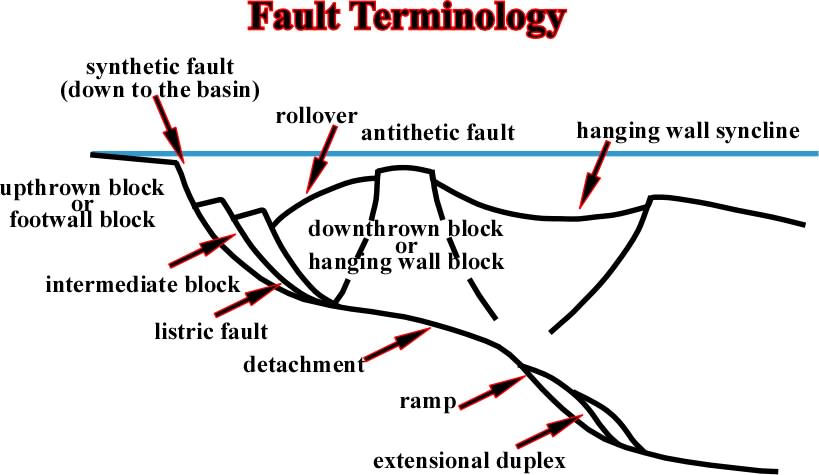Moving wall is called the hanging wall.
Hanging wall is downthrown in a normal fault.
In a normal fault the hanging wall moves downward relative to the footwall.
The downthrown block slips downward and basinward relative to the upthrown block.
Hanging wall represents the upper wall of a fault.
A normal fault is a type of dip slip fault where one side of land moves downward while the other side stays still.
The non moving land is called the footwall.
When a fault slips the hanging wall moves up and the footwall moves down a.
Fault scrap is the cliffs that represent the edge of a vertically displaced block.
Note that both refer to the hanging wall block.
The downthrown side is the side which went relatively down and is represented by such an arrow or the letter d.
Growth faults have two blocks.
Faults can be generalized into four principal types based on the direction and angle of movement.
We need to know two things to determine fault type.
A normal fault is one in which the hanging wall block is downthrown.
Such faults are typically regional in nature and develop as a response to extensional collapse of a passive continental margin i e.
Niger delta mississippi delta.
A reverse fault is one in which the hanging wall block is upthrown.
The footwall is the lower wall of a fault.
A reverse fault is a fault in which the hanging foot wall block has moved downward.
The only difference between the normal fault and reverse fault is that in normal fault the hanging wall is downward with respect to the footwall whereas in a reverse fault the apparent movement of the hanging wall is upwards with.
This is only true of a normal fault b.
A rollover anticline is a syn depositional structure developed within the downthrown block hanging wall of large listric normal faults.
The upthrown block the footwall is landward of the fault plane and the downthrown block the hanging wall is basinward of the fault plane.
With strike slip faults sometimes the opposite.
Which side is the hanging wall and which side is upthrown and which downthrown.
Most deformations occur within the hanging wall side.
What is normal fault.
It depends on which side of the fault is the footwall which varies depending on the fault type c.
Low angle normal faults with regional tectonic significance may be designated detachment faults.
A fault in which hanging wall has apparently gone up with respect to the footwall is termed as reverse fault.
Downthrown block is the lowermost block of a fault.
A type of fault in which the hanging wall moves down relative to the footwall and the fault surface dips steeply commonly from 50 o to 90 o groups of normal faults can produce horst and graben topography or a series of relatively high and low standing fault blocks as seen in areas where the crust is rifting or being pulled apart by plate tectonic activity.
Moreover the fault surface between footwall and hanging wall dips steeply.
A downthrown block between two normal faults dipping towards each other is a graben.
An upthrown block between two normal faults dipping away from each other is a horst.

